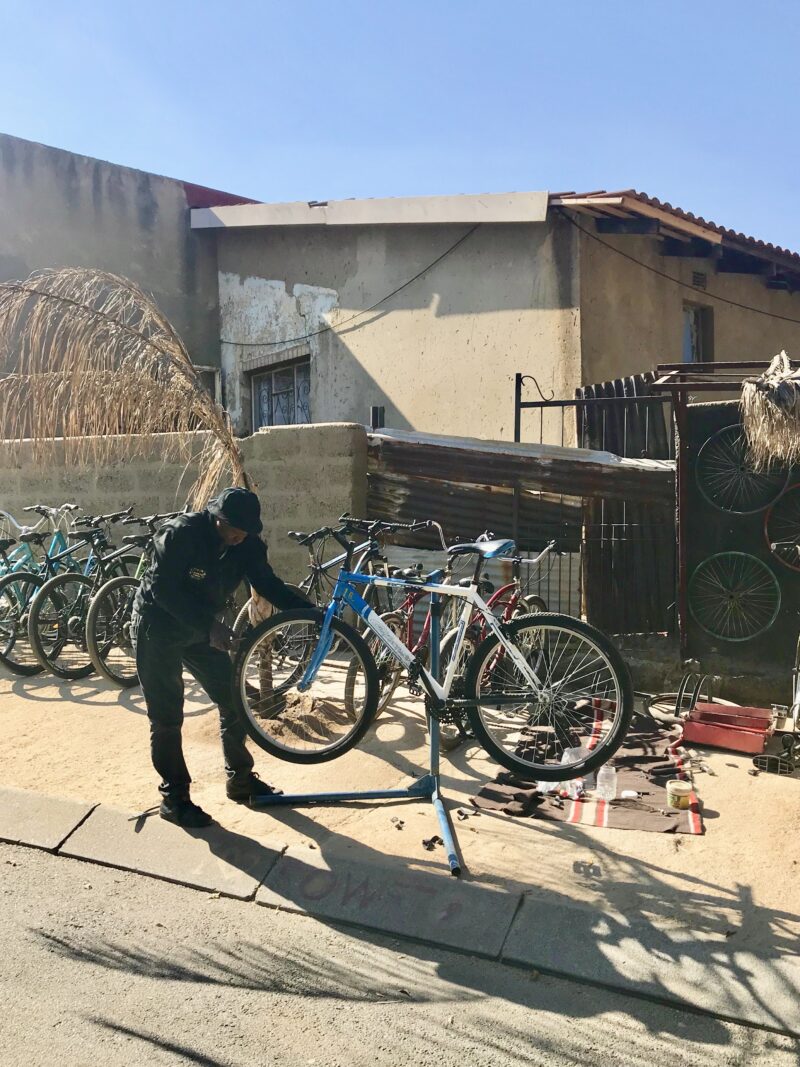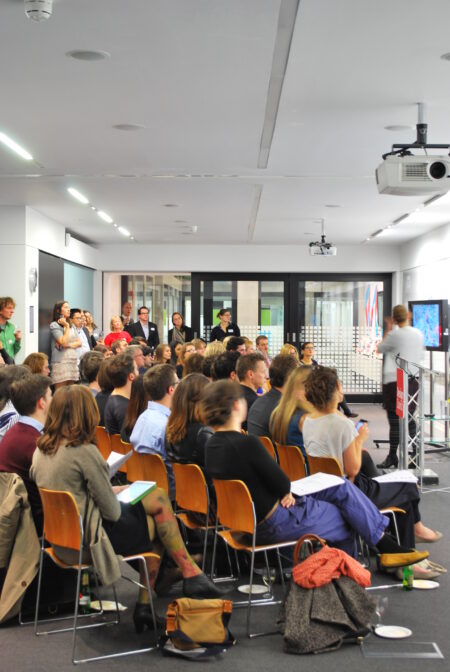There is no better way of experiencing a place or indeed finding yourself than from the saddle of a bike. Guest philosopher Mark Bessoudo explores the philosophy of cycling and place.
The only thing I knew about the place I was about to ride a bicycle through was that it was precisely the kind of place I should not ride a bicycle through. Or so I thought.
To be fair, I knew a few basic facts about this place – like how this township on the southwestern edge of Johannesburg, South Africa, was associated with fatal anti-Apartheid protests in the 1970s, and that Nelson Mandela had lived here at some point – but beyond that, I didn’t know much. I just knew that traveling on two wheels through a town that, to outsiders, had a reputation for being dangerous, was probably not a bright idea.
But here I was in Soweto on a cloudless mid-June afternoon, signing my name on a liability waiver form before joining a cycling tour with a local guide and a half dozen other curious visitors. I had no idea what to expect. Over the next four or five hours we would pedal over dusty dirt paths and coast along paved roads. We rode next to an open landfill, beyond which, far in the distance, could be seen structures that dominate the skyline like juxtaposed bookends: the iconic cooling towers of the decommissioned Orlando coal-fired power station at one end and the modern architectural gem of Soccer City stadium on the other.
We didn’t just visit historical landmarks at predetermined stopping points. In between bouts of cruising on our bikes, we also had an impromptu conversation with a sangoma (traditional healer), encountered a raucous engagement party and were offered grilled chicken by a friendly group of locals at a front yard barbecue. We were active participants, not just passive observers.
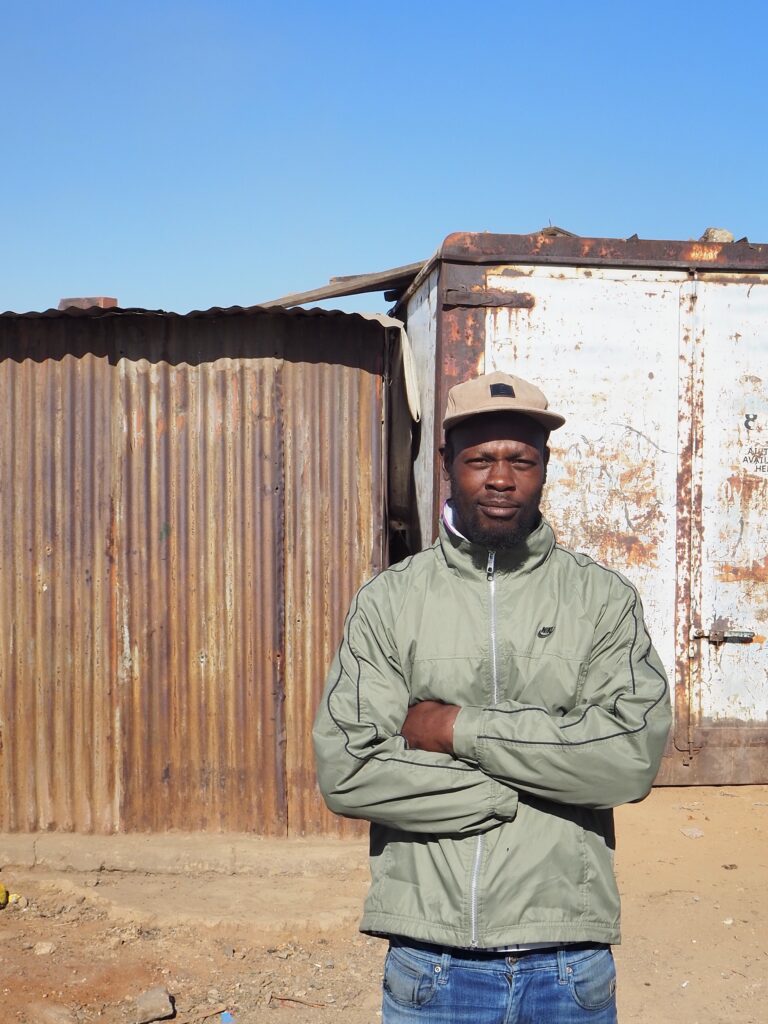


We covered a lot of ground over a relatively short period of time – not just geographically, but experientially. Far from being the small homogeneous shanty town that I had imagined it to be, Soweto revealed itself to be a complicated, complex and surprisingly contemporary city.
That this experience left a positive impression on me shouldn’t have been surprising. It’s true that as a visitor to any new place, my default mode is to pay attention to the otherwise ordinary things that are invisible to locals, but novel to me: the vernacular architecture, the street signs, the bus stops, the street life in public spaces.
But my positive mood that afternoon wasn’t just due to the fact that I was a wide-eyed visitor eager to soak in a new urban experience. I was also under the influence of a substance that is almost perfectly designed to enhance awareness, sharpen the senses, focus concentration, raise heart rate and elicit feelings of warmth, happiness and well-being.
That substance? The bicycle itself.
It was only later that I realized that my mind had been flirting with a feeling known as ‘flow’. Psychologists define flow as a positive mental state that materializes when you are fully immersed in an intrinsically rewarding activity. It’s characterized by a sort of ‘hyperfocus’ – an intense and energized absorption of the present moment – combined with a merging of action and awareness, a loss of reflective self-consciousness and a sense of personal agency over the activity involved. Cycling ticks all these boxes. Even if the cycling is only leisurely, the sheer physicality of it – the repetitive movements and sustained exertion – still plays a part. And while flow may be more easily produced on longer uninterrupted rides that are only possible in rural areas, it can also be induced by the unique cognitive demands placed on cyclists in dense urban areas.
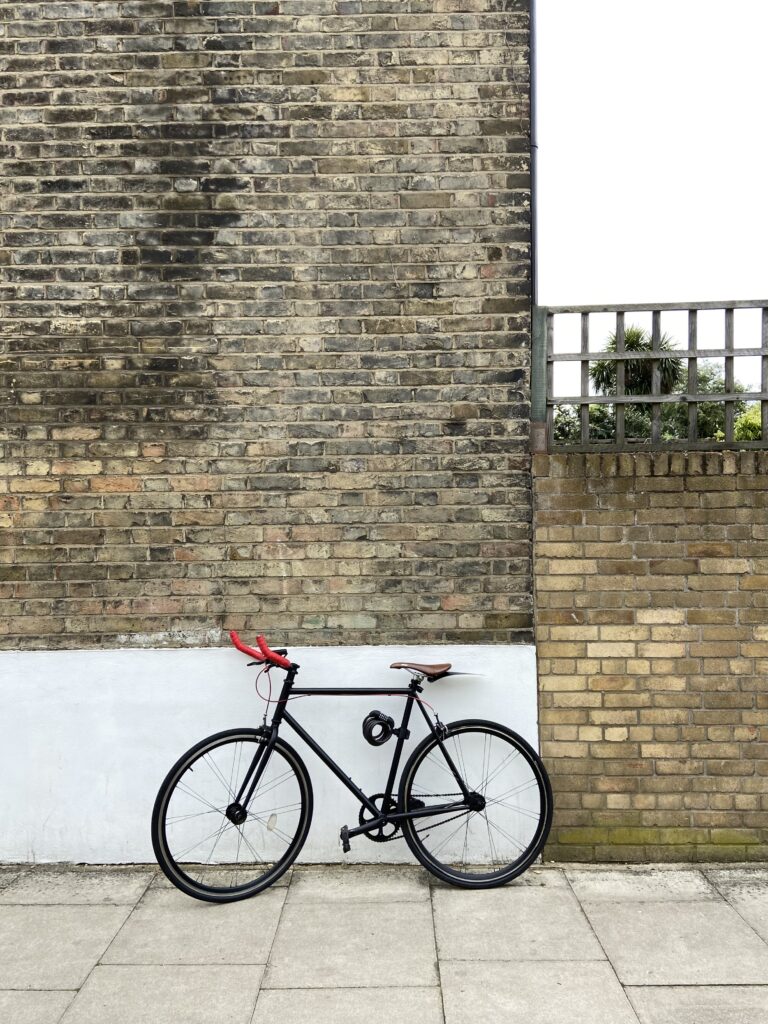
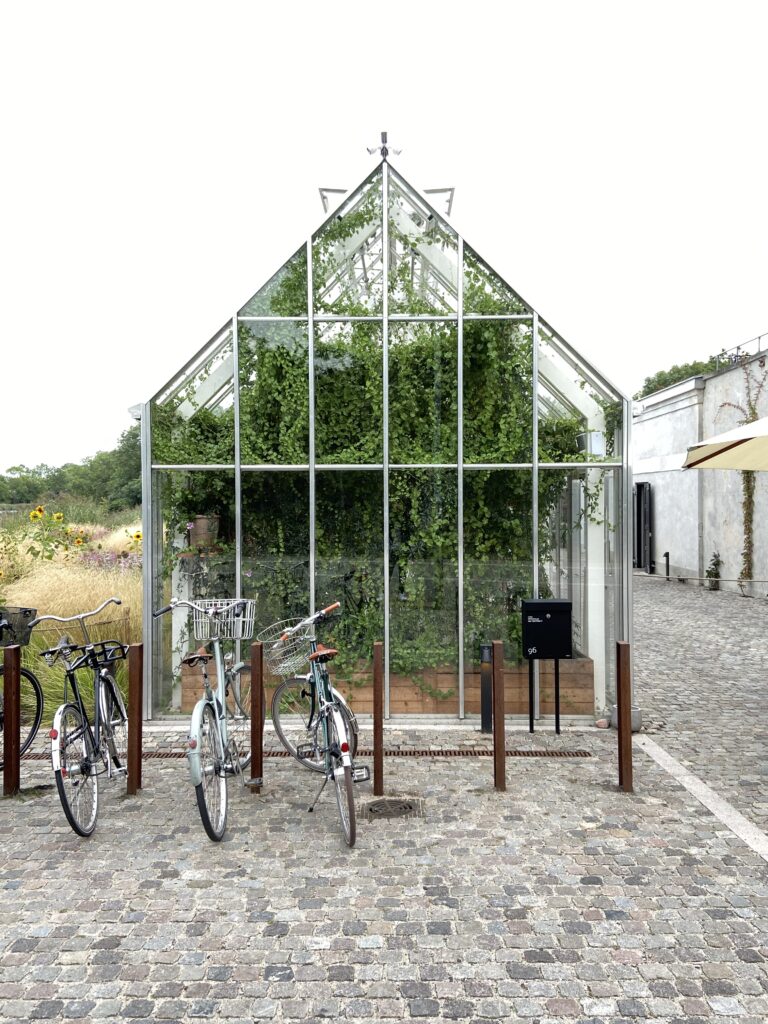
When you cycle in the city, it becomes clear how you are something that exists ‘out there’ in the real world, embedded in the flux and ecosystem of everyday life, vulnerable to all its latent uncertainties and unpredictability. You must negotiate the road while contending with dynamic conditions involving other cyclists, pedestrians, potholes, buses, distracted drivers, street signs, traffic lights, construction sites, and inclement weather.
But it’s not all precarious. City cycling also provides its own set of small satisfactions. It just requires a sufficiently mindful attitude or qualitative mindset to appreciate them. For example, there’s something intrinsically enjoyable about communicating with others on the road through non-verbal micro-gestures: the symphony of arm signals, head nods, eye contact, over-the-shoulder blind spot checks and the occasional smile. There are the passive pleasures of zipping past so many pedestrians: catching a glimpse of an interesting character, or overhearing fragments of a conversation with no context. It’s like people watching from an outdoor cafe, but on a whole other level. Then there’s the thermal delight of the breeze brushing past me on a hot summer day. And, of course, the tactile feedback of feeling the imperfections of the road through my handlebars and the soft soles of my sneakers. It’s a saturation of the senses.
It reminds me of the classic philosophical fiction Zen and the Art of Motorcycle Maintenance when the narrator reflects on the drastic difference between driving a car and riding a motorcycle. “You don’t realize that through that car window everything you see is just more TV,” he laments. “You’re a passive observer and it is all moving by you boringly in a frame.” But traveling by motorbike instead, he continues, removes this artificial frame: “You’re completely in contact with it all. You’re in the scene, not just watching it anymore, and the sense of presence is overwhelming. That concrete whizzing by five inches below your foot is the real thing… The whole experience is never removed from immediate consciousness.” In other words, the driver and the biker may be traversing the exact same terrain in geographic terms, but their experience of the journey is miles apart. This metaphysical distinction is even more pronounced when comparing the car driver with the urban cyclist.
Movement is core to humanity. There is more to us than just our brains. The growing field of ’embodied cognition’ demonstrates how our thoughts are powerfully shaped by the sensations, gestures and movements of our bodies. As the science writer Annie Murphy Paul notes, we are not just solo actors, stranded alone in the cosmos. Rather, she says, “we are networked organisms who move around in shifting surroundings, environments that have the power to transform our thinking.” The mind does not stop at the brain. It extends into the world and augments the capacities of the biological brain with outside-the-brain resources – a resource like a bicycle, a computer or an iPhone. (Steve Jobs once remarked: “What a computer is to me is it’s the most remarkable tool that we’ve ever come up with, and it’s the equivalent of a bicycle for our minds.” Jobs so loved the bicycle that he had even wanted to change the name of Apple’s Macintosh computers to Bicycle at one point.)
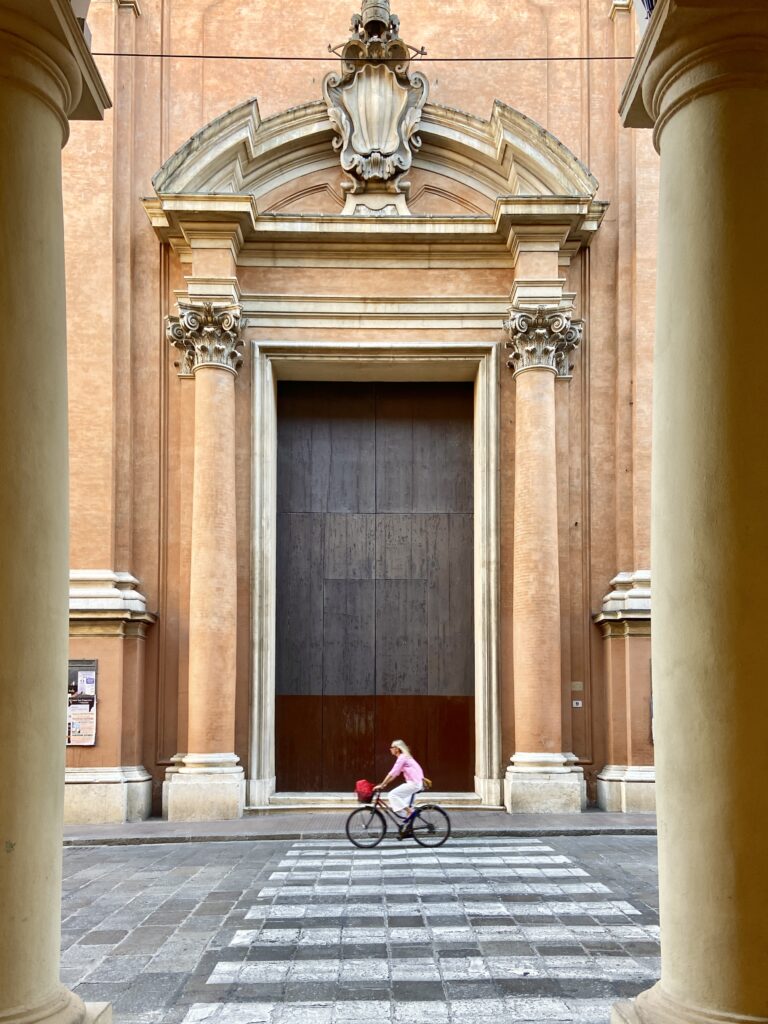
Cycling is the fastest, cheapest, easiest and funnest way to get you from point A to point B, full stop. Happier people, more engaged communities, cleaner air and reduced dependence on fossil fuels are just incidental benefits – significant benefits, but incidental nonetheless. This might be why cities whose citizens are consistently ranked among the world’s happiest, like Copenhagen, Amsterdam or even Bogotá, often have a progressive culture of cycling.
These facts, combined with its low-tech simplicity, is what makes bicycle ‘the nearly divine epitome of sustainability’, according to the Danish philosopher Steen Nepper Larsen in Becoming a Cyclist: Phenomenological Reflections on Cycling. But sustainability takes many forms. While a life-cycle analysis of a standard bicycle might demonstrate just how minimal its environmental impact is compared to other mobility options, supporting the widespread adoption of cycling isn’t just a matter of cold quantitative calculations of carbon emissions or commute times; it’s also a matter of qualitative attitude. It’s about looking at the bicycle’s role in improving embodied cognition, not just embodied carbon. It’s about considering the social with the environmental, the physical with the cerebral, and the material with the spiritual. City cycling is a matter of both the head and the heart – the two most important things that exist between the road and the helmet.
Mark Bessoudo is an urban sustainability researcher based in London. He is a Member Chartered Building Engineer and Fellow with the Centre for Conscious Design.


